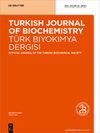过氧化物酶体增殖物激活受体(PPAR)在冠心病中的异构体
IF 0.7
4区 生物学
Q4 BIOCHEMISTRY & MOLECULAR BIOLOGY
Turkish Journal of Biochemistry-turk Biyokimya Dergisi
Pub Date : 2013-01-01
DOI:10.5505/TJB.2013.08760
引用次数: 2
摘要
冠心病是一种遗传和环境因素共同作用的复杂疾病。了解遗传因素与环境因素之间的复杂相互作用,将有助于阐明冠心病的发病机制,通过遗传物质的修饰来预防疾病,推进疾病的治疗。高脂血症是动脉粥样硬化和冠心病的主要危险因素。在过去的几年里,人们对胆固醇水平和协调胆固醇受体和转运体作用的基因进行了广泛的研究。核受体超家族成员,特别是过氧化物酶体增殖激活受体(PPAR)是这一过程中最重要的调节因子。ppar是调节脂肪酸和碳水化合物代谢的潜在转录因子,也是膳食脂质传感器。三种亚型(α, β / δ, γ)由不同的基因编码并在不同的组织中表达。PPAR α调节脂质代谢、单核细胞积聚和粘附以及泡沫细胞形成相关基因的表达。在肥胖和糖尿病动物模型中,PPAR β / δ被认为是高脂血症的合适靶点,可以增加高密度脂蛋白胆固醇,降低脂肪脂肪酸储存、甘油三酯、空腹胰岛素水平和小而致密的LDL。此外,研究发现PPAR β / δ通过增加心脏和骨骼肌中脂肪酸利用相关基因的表达,将骨骼肌型纤维从糖酵解状态转变为氧化状态,从而激活脂肪酸的氧化。PPAR γ参与调控许多靶基因的表达,涉及脂肪细胞分化、脂质代谢和葡萄糖稳态。PPAR γ似乎还具有免疫抑制功能,这可能有利于抗动脉粥样硬化的作用。所有这些发现都表明PPAR可能是肥胖和糖尿病以及随后冠心病的一个有希望的候选基因。本文章由计算机程序翻译,如有差异,请以英文原文为准。
Peroxisome proliferator-activated receptor (PPAR) isoforms in coronary heart disease
Coronary heart disease (CHD) is a complex disease resulted from interaction of numerous genetic and environmental factors. It is expected that understanding of complex interaction between genetic factors and environmental factors would contribute to clarifying the pathogenesis of CHD, prevention of diseases by modifying of genetic material and advancing of treatment of diseases. Hyperlipidemia is the primary risk factor for atherosclerosis and CHD. In past years, extensive studies were done on cholesterol levels and the genes that coordinate the effects of cholesterol receptor and transporters. The members of nuclear receptor super family, especially the peroxisome proliferator-activated receptors (PPAR) are the most important regulators in this course. PPARs are potential transcriptional factors that regulate fatty acid and carbohydrate metabolism and are dietary lipid sensors. Three subtypes (alfa, beta/delta, gama) are encoded by separate genes and expressed in different tissues. PPAR alpha regulates the expression of genes related to lipid metabolism, monocyte accumulation and adhesion, and formation of foam cell. In animal model of obesity and diabetes mellitus, PPAR beta/delta is suggested to be a suitable target in hyperlipidemia, increasing HDL-cholesterol and reducing adipose fatty acid storage, triglyceride, fasting insulin levels, and small and dense LDL. Furthermore, it was discovered that PPAR beta/delta activates the oxidation of fatty acid by increasing the expression of genes involved in utilization of fatty acid in heart and skeletal muscles and changing skeletal type fibril from glycolytic to oxidative state. PPAR gamma takes part in the regulation of many target genes expression which involved in adipocyte differentiation, lipid metabolism, and glucose homeostasis. PPAR gamma also appears to possess an immune suppressive function, which could favor an anti-atherosclerotic effect. All above findings together have suggested that PPAR would be a promising candidate gene for obesity and diabetes and subsequently for CHD.
求助全文
通过发布文献求助,成功后即可免费获取论文全文。
去求助
来源期刊
CiteScore
1.20
自引率
0.00%
发文量
0
审稿时长
6-12 weeks
期刊介绍:
Turkish Journal of Biochemistry (TJB), official journal of Turkish Biochemical Society, is issued electronically every 2 months. The main aim of the journal is to support the research and publishing culture by ensuring that every published manuscript has an added value and thus providing international acceptance of the “readability” of the manuscripts published in the journal.

 求助内容:
求助内容: 应助结果提醒方式:
应助结果提醒方式:


